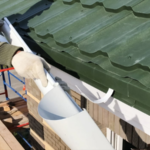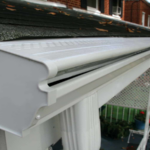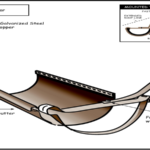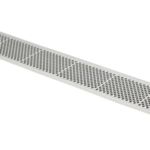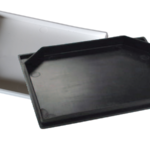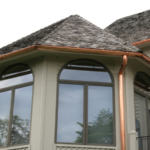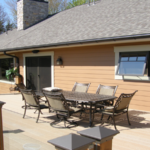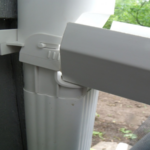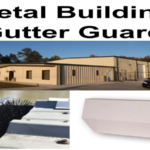Your home is your castle, and you want to make sure it’s as comfortable and functional as possible. But comfort and function don’t come cheap – especially when it comes to home improvement projects. That’s why it’s important to upgrade your home wisely, choosing projects that will add value without breaking the bank.
One wise investment you can make is to install new gutters. Gutters play a vital role in keeping your home in good condition, and they can add to its curb appeal as well. But with so many gutter options on the market, it can be tough to know which type to choose.
Our gutter installation guide will help you make the best decision for your home. We’ll cover the different types of gutters available, as well as the pros and cons of each. We’ll also share some tips on what to look for when hiring a gutter installer. By the time you’re finished reading, you’ll know everything you need to about installing new gutters on your home.
What is the rule of thumb for gutter installation?
There is no definitive answer to this question as it depends on a number of factors, such as the type of roof, the slope of the roof, the number of trees in the vicinity, etc. However, a good rule of thumb is to install gutters that are at least 5 inches wide and have a minimum slope of 1/4 inch per foot.
Should gutters match the house?
The answer to this question is not as straightforward as one might think. While there are some who believe that gutters should always match the trim color of the house, others believe that it is more important for the gutters to complement the roof. There are a few factors to consider when making this decision.
The first factor is the overall aesthetic of the house. If the house has a lot of different colors and textures going on, then it might be best to keep the gutters simple and neutral. On the other hand, if the house has a more streamlined look, then matching the gutters to the trim color can help to create a cohesive look.
The second factor to consider is the climate. In areas with a lot of rainfall, it is important to make sure that the gutters are able to effectively channel the water away from the house. In these cases, it is often best to go with a darker color gutter so that any dirt or debris is less visible.
The third factor to consider is the maintenance. Gutters that are made from lighter materials are more prone to sagging and developing leaks. If the gutters are going to be exposed to a lot of elements, then it is worth investing in a sturdier material that is easier to maintain.
Do gutters go under drip edge?
Gutters are designed to protect your home from water damage by directing water away from the foundation. They are installed along the eaves of your roof, and most homes have them installed on all sides of the house. The gutters are installed so that they slope towards downspouts, which are installed at the corners of the house. The gutters are usually made of metal, and the downspouts are usually made of plastic or metal. The gutters are installed so that they are level with the drip edge. The drip edge is the edge of the roof that protrudes beyond the edge of the gutter. The purpose of the drip edge is to prevent water from seeping behind the gutter and causing damage to the fascia board and soffit.
Do I need 6 or 7 inch gutters?
It depends on the size of your roof and the amount of rainfall in your area. If you have a small roof and live in an area with light rainfall, you can probably get away with 6 inch gutters. If you have a large roof or live in an area with heavy rainfall, you’ll probably need 7 inch gutters.
How far can you run a gutter without a downspout?
The answer to this question depends on a few factors, such as the type of gutter you have, the amount of rainfall in your area, and the size of your gutters. Generally speaking, you can run a gutter without a downspout for a few hundred feet before water will begin to back up and overflow.
What is the ideal gutter margin?
There is no definitive answer to this question as it depends on the preferences of the individual designer or typesetter. However, a common suggestion is to use a gutter margin of at least 1.27 cm (0.5 inch) to allow for adequate space between the text and the binding. This ensures that the text is not too close to the edge of the page and makes it easier to read.
Are vinyl gutters better than aluminum?
There are pros and cons to both vinyl and aluminum gutters. Vinyl gutters are less expensive than aluminum gutters and are easier to install. However, vinyl gutters can crack and break more easily than aluminum gutters. Aluminum gutters are more durable, but they are also more expensive.
How do I calculate how much gutters I need?
There are a few factors to consider when calculating the amount of gutters you need for your home. The first is the size of your home. The second is the amount of rainfall your area typically gets. The third is the slope of your roof. And the fourth is the number of downspouts you want to install.
To calculate the size of your gutters, you’ll need to measure the length and width of your home’s roof. Then, you’ll need to determine the slope of your roof. The slope is the number of inches the roof rises for every 12 inches it extends. For example, a roof with a 4/12 slope rises 4 inches for every 12 inches it extends.
Once you have the length, width, and slope of your roof, you can calculate the square footage of your roof. To do this, you’ll need to multiply the length by the width, and then multiply that number by the slope. For example, if your roof is 30 feet long and 20 feet wide with a 4/12 slope, your roof’s square footage would be 30 x 20 = 600, and then 600 x 4/12 = 200 square feet.
Conclusion
If you’re thinking about upgrading your home, there are a few things you should keep in mind. Our gutter installation guide can help you make the best decision for your home. We’ll help you choose the right type of gutters for your home and budget, and we’ll also provide tips on how to properly install them. With our help, you can make sure your home is up to date and looking its best.



